Your daily dose of Product Management Goodness
Want to know more?
We would love to hear your questions and suggestions for topics you would like to see covered in our future blog posts, so don't be shy and get in touch!

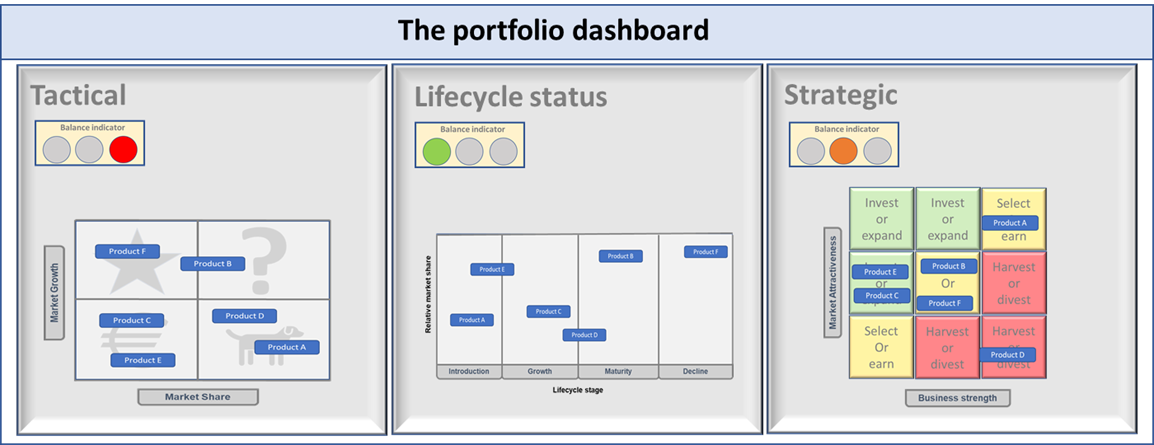
Managing a product portfolio
How do Product Managers make the right investment decisions so that the portfolio is performing well today and will continue to perform well in the future?
We use a dashboard so that Product Managers can make sure the tactical balance is correct (The BCG matrix), the Lifecycle mix is right (ideally we don’t want a portfolio all at the same stage of Lifecycle) , and the fit to longer term strategy is correct (the GE tool)
This gives a balanced view of portfolio
read more
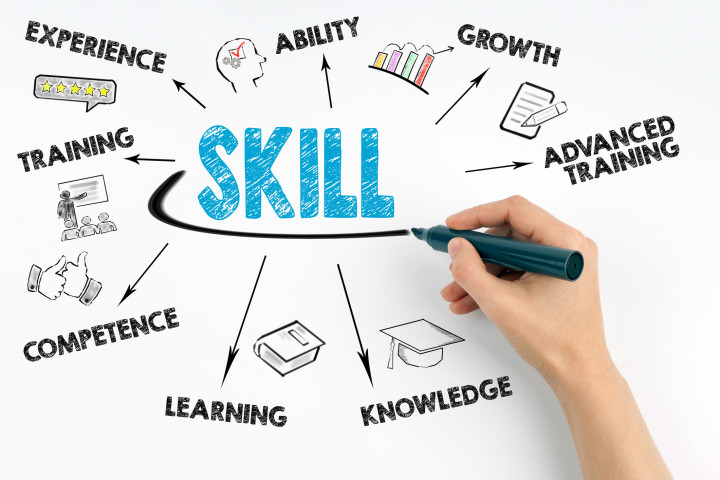
Embedding Training
At Tarigo we know how important it is to have a holistic view to training . Our training approach is to offer a structure that we believe truly engages the delegates, improves learning outcomes and offering the best opportunity for knowledge transfer. It has three key elements:
? Pre-training preparation
Engaging the delegates so they arrive at training already thinking about product management
? Classroom training
Keeping delegates engaged by making them part of the training
? Post-training reinforcement & continuous improvement
Helping delegates adopt the training and also continue to develop their skills.
read more
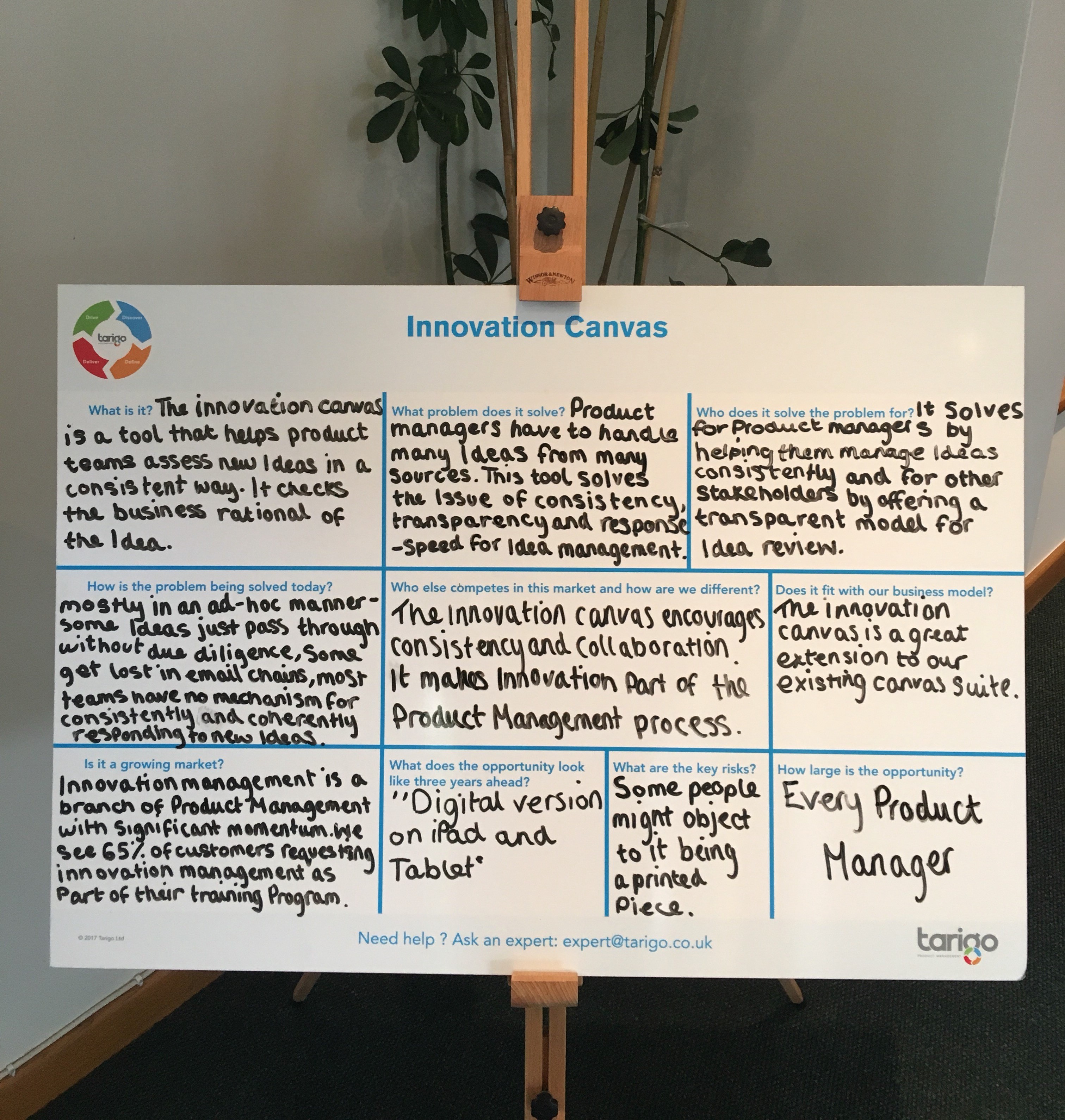
Step Ten
Step 10 - How large is the opportunity
This step is where we look at the size of the available market for the product.
"Every Product Manager"
We hope you have found our step through the innovation canvas helpful. we have 10 of the wipe clean boards available FREE to the first 10 people that message.
To get yours email: info@tarigo.co.uk
read more
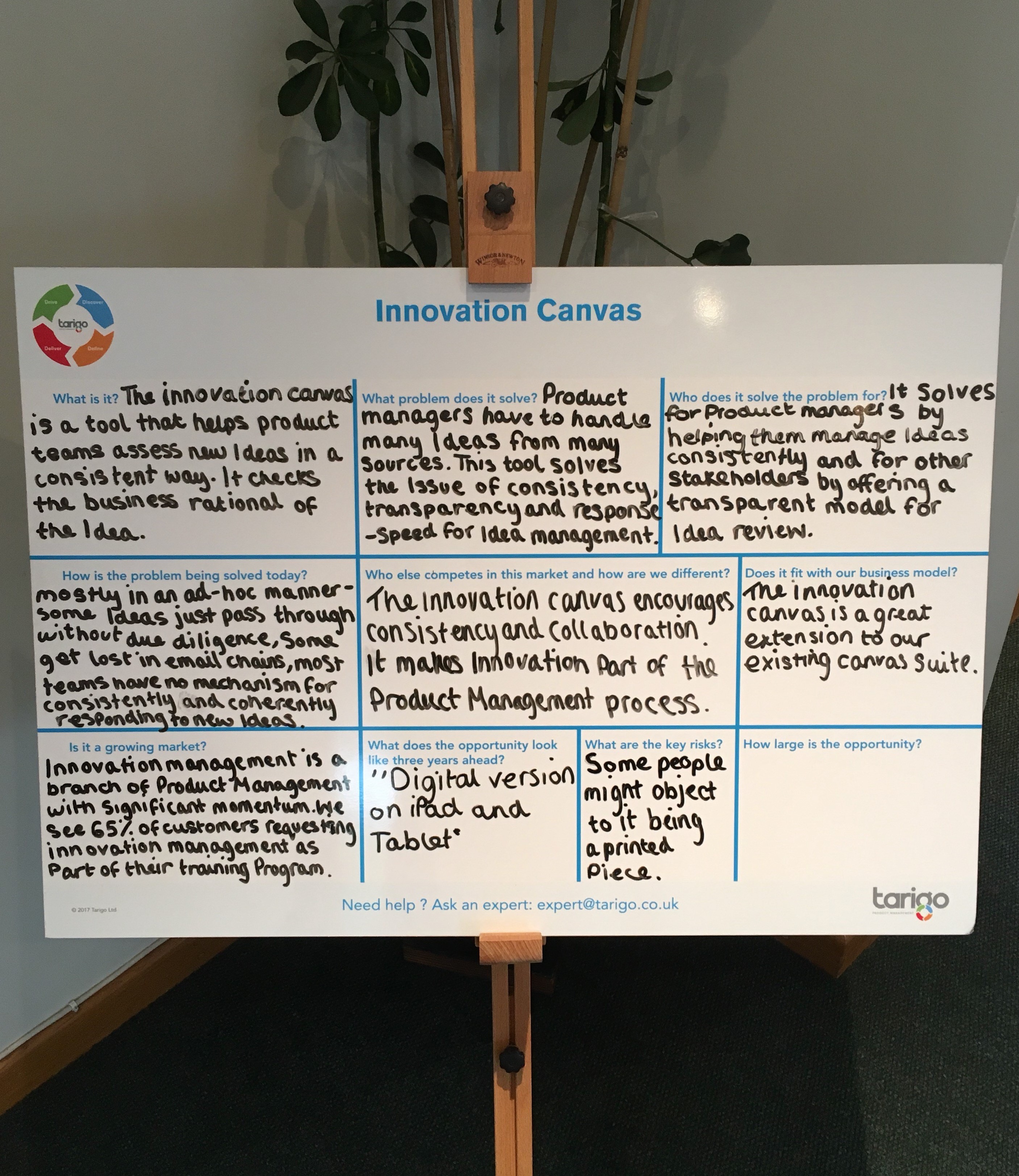
Step Nine
Step Nine "What are the key risks?"
Every new product idea has risk, but don't get overwhelmed with small issues. What are the big risks that could derail your product - regulation, innovation, etc
" Some people might object to it being a printed piece"
read more
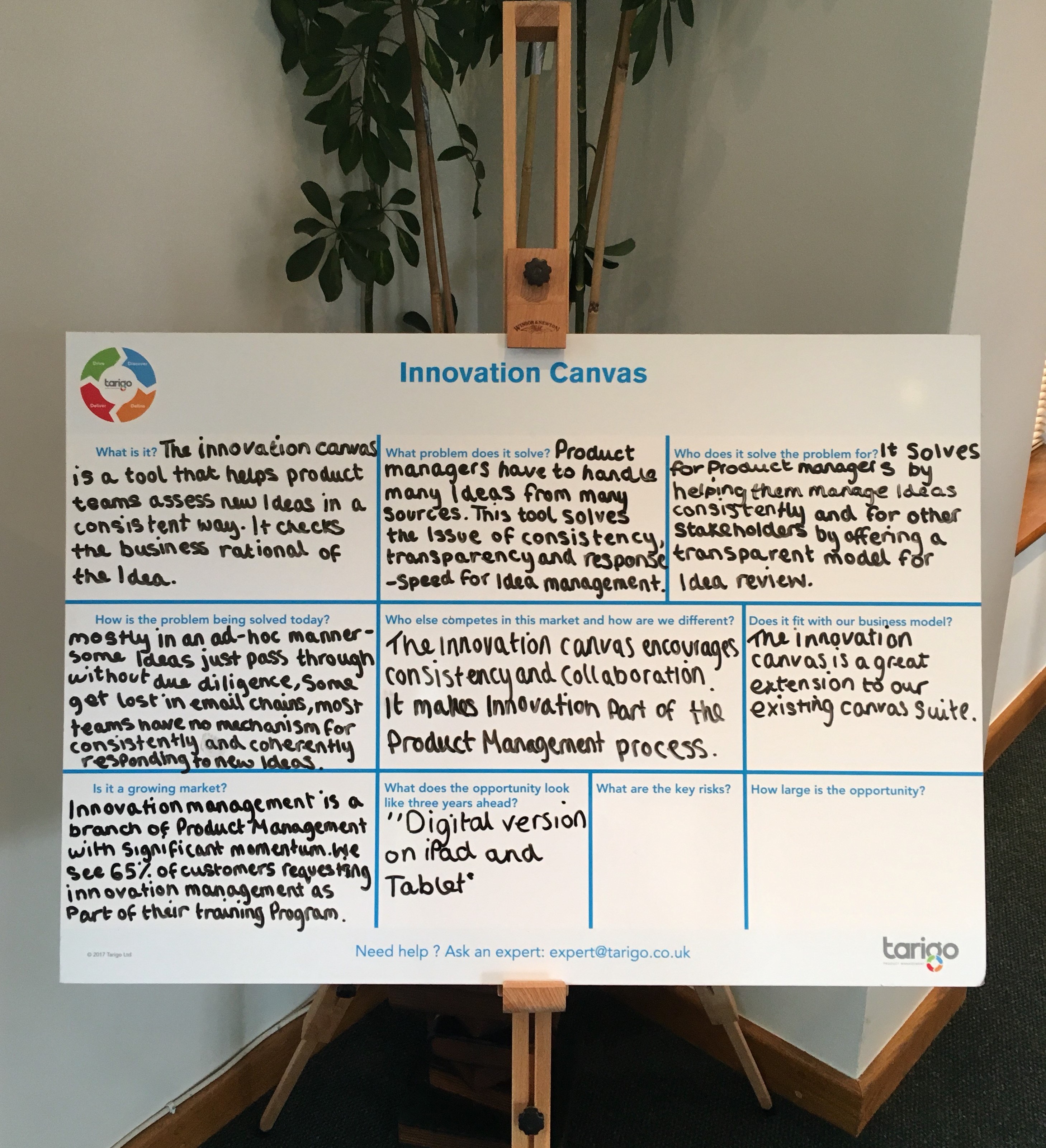
Step Eight
Step eight - What does the opportunity look like three years ahead?
This reaffirms the opportunity has long term potential how will your Product and market develop in 3 years.
"Digital version on iPad and Tablet"
read more
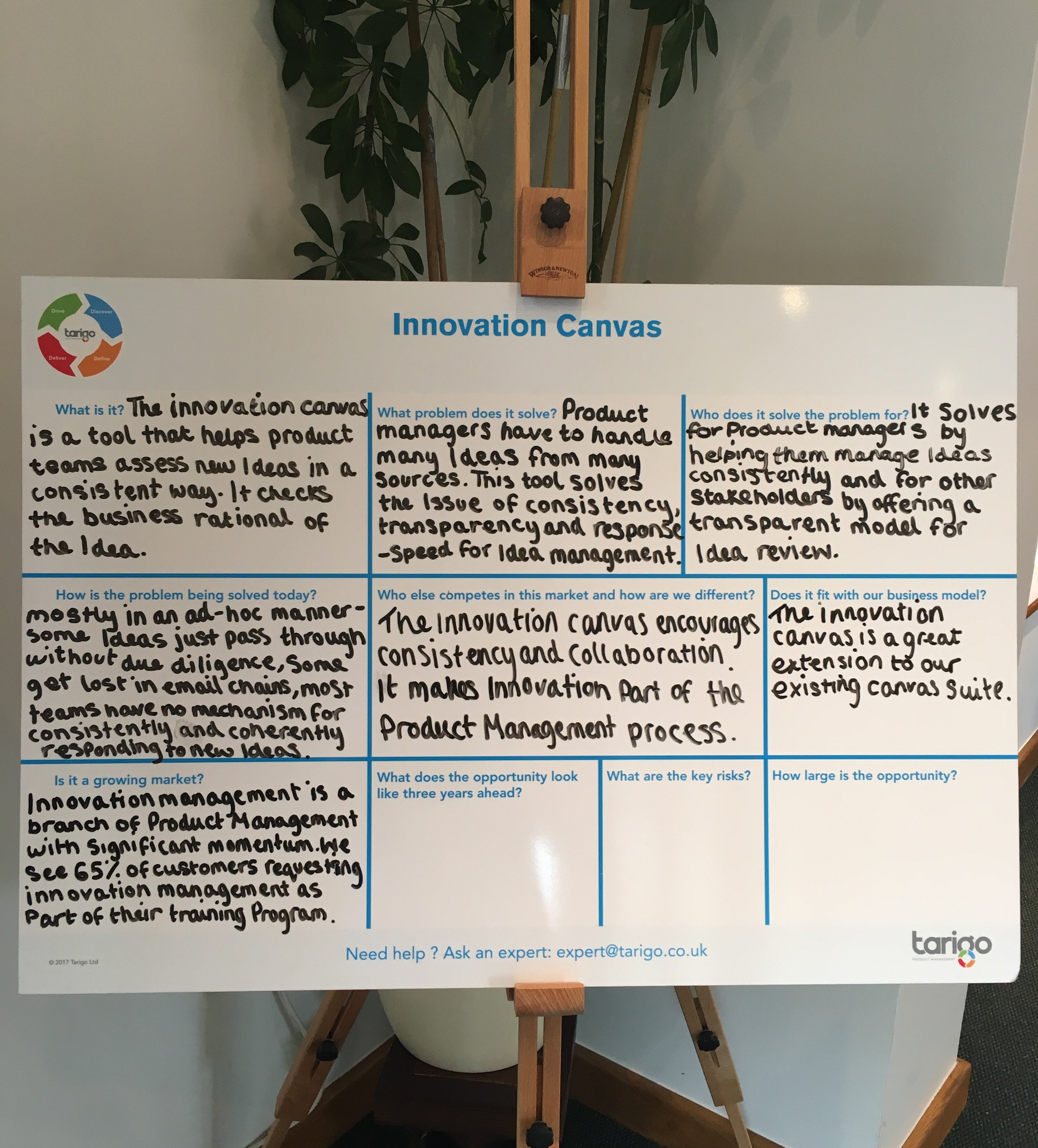
Step Seven
Step seven - Is it a growing market?
Sometimes we take new technology to an existing market, sometimes we build brand new markets for new markets. It's worth understanding if you're in a growth market or not - stage of life cycle will partly define the risk profile for your product - innovation tends to be high risk and high reward.
"Innovation management is a branch of Product Management with significant momentum. We see 65% of customers requesting innovation management as part of their training program"
read more
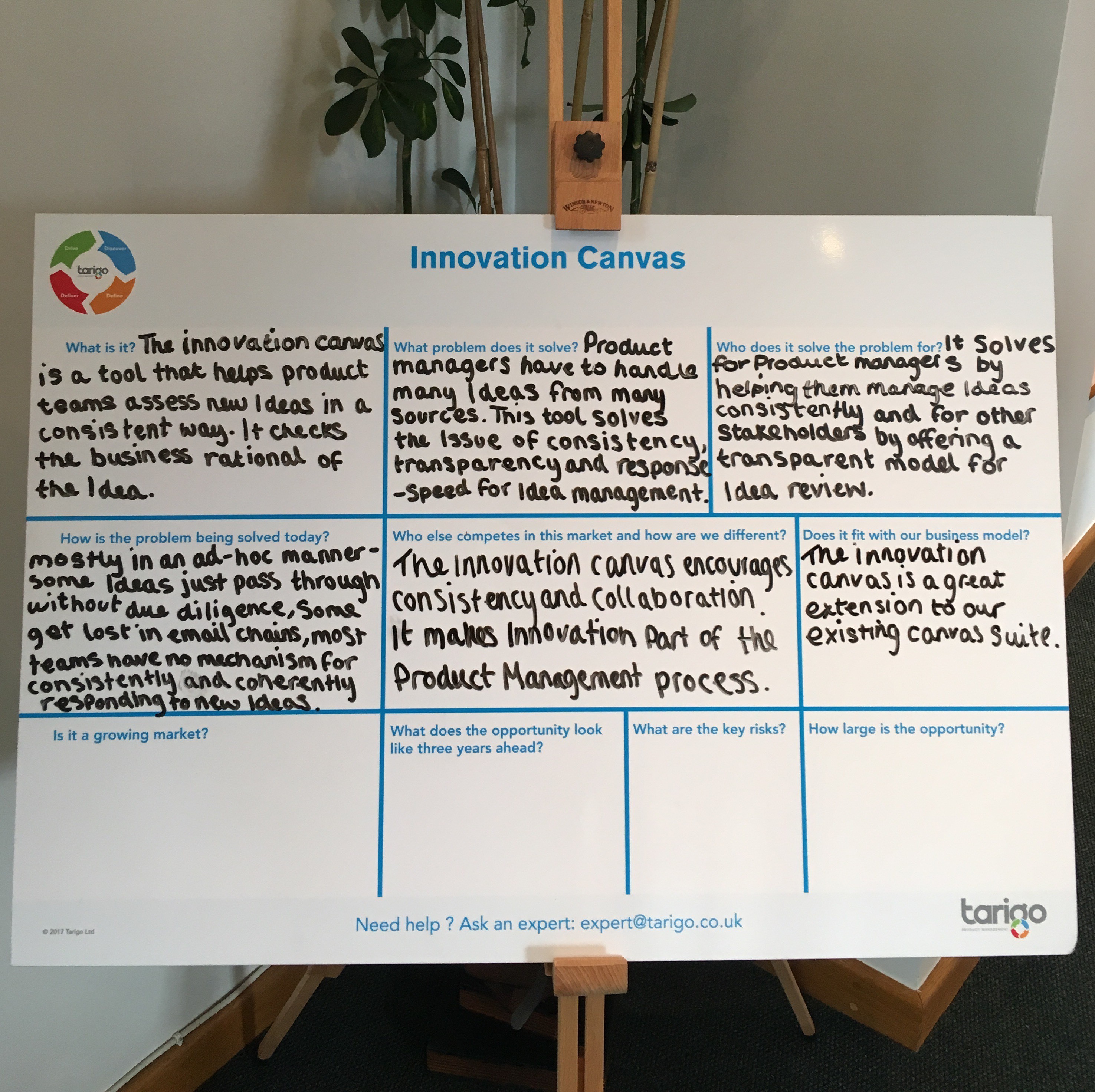
Step Six
Step Six - does it fit with our business model?
Does the idea fit with your sales channel (is it at a price point your channel can support), vision (does it fit with your three year view), and portfolio (does it cannibalise an existing offer). It might be a great product idea, just not for your business
"The innovation canvas is a great extension to our existing canvas suite"
read more
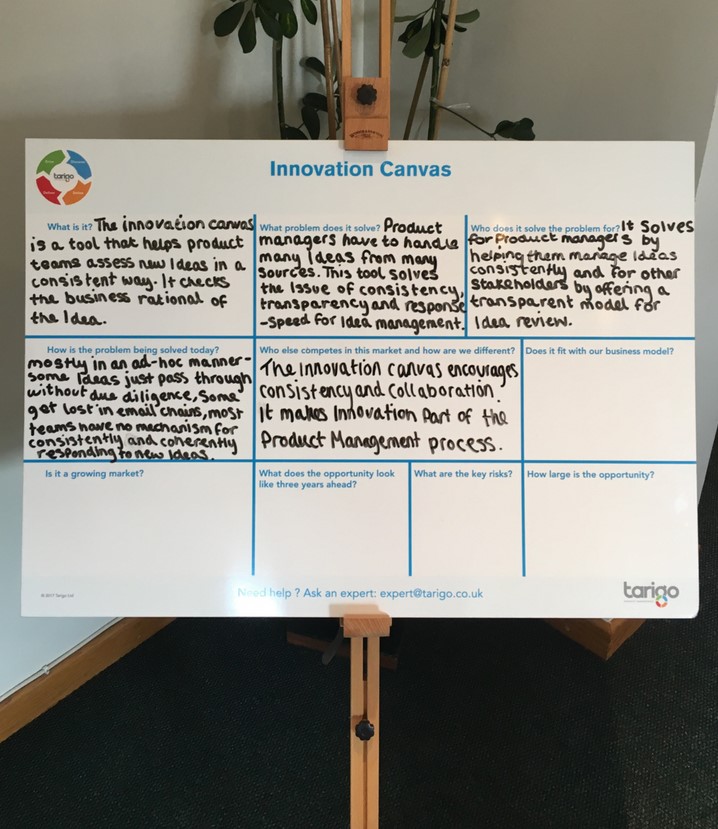
Step Five
Step five - who else competes and how are we different?
If there are alternate solutions we need to think what our USP is. Its worth remembering that the difference might be outside the product (service, range, reach, brand, etc) No USP? Price becomes the last point of difference.
"The Innovation Canvas encourages consistency and collaboration. It makes innovation part of the product management process"
read more
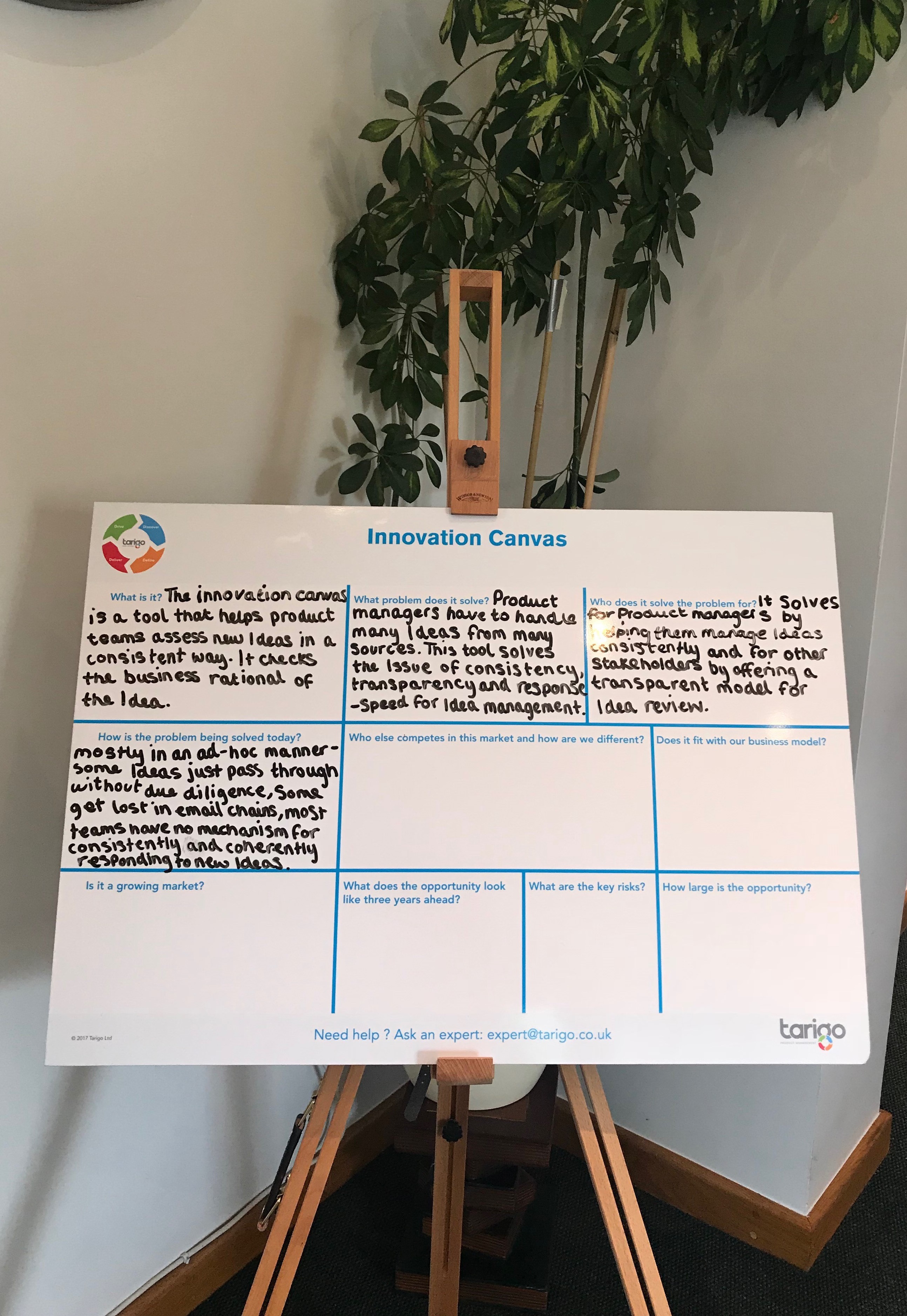
Step Four
Step four - How is the problem being solved today?
If it really is a problem, your target customer will be trying to solve it. Perhaps in a clunky, expensive, error prone way. If your customer isn't trying to solve the problem today? Ask if the problem is significant to them.
"Mostly in an ad-hoc manner - some ideas just pass through without due diligence, some get lost in email chains, most teams have no mechanism for consistently and coherently responding to new ideas"
read more
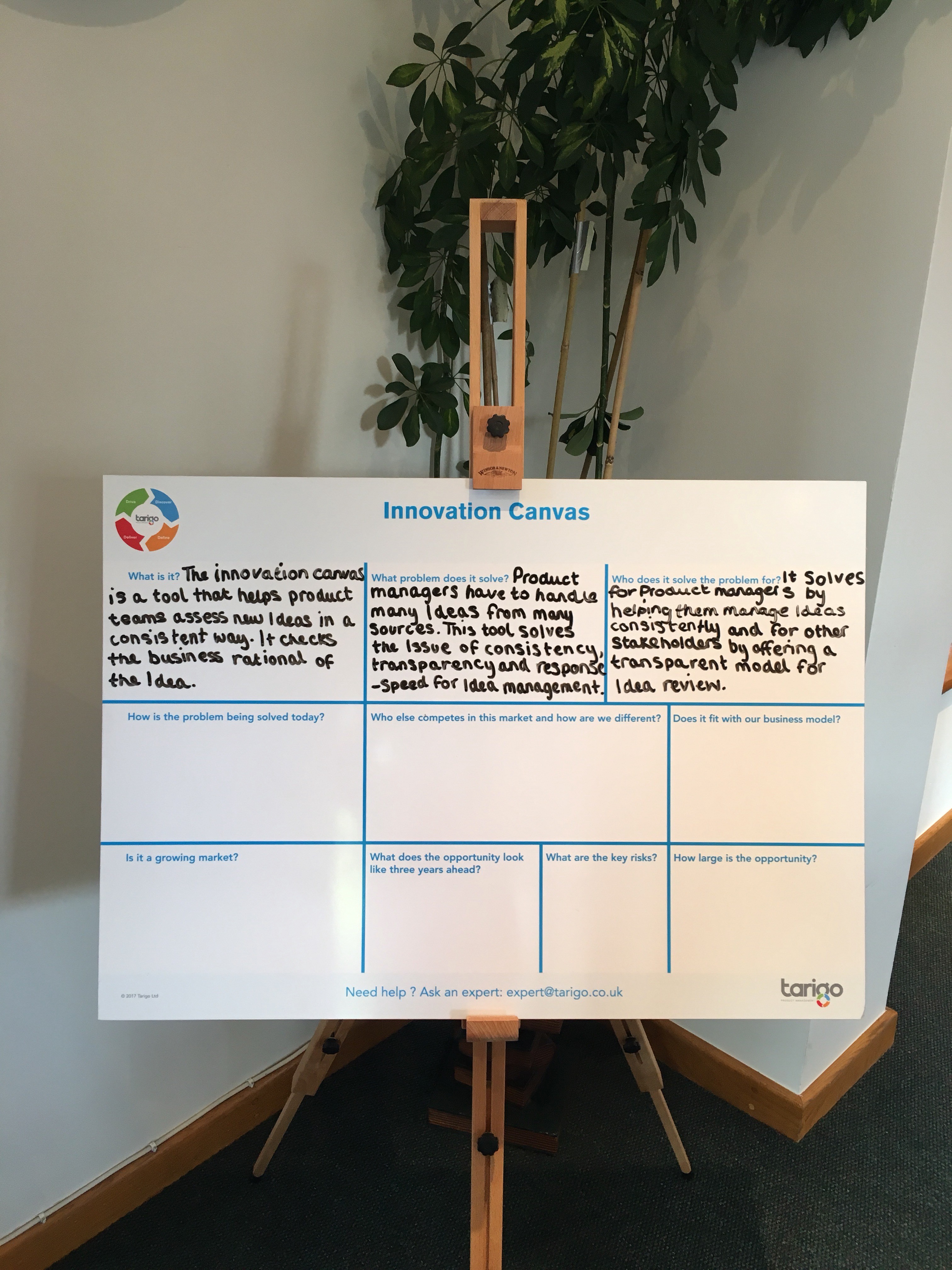
Step Three
Step three - who does it solve the problem for.
Does it solve for a customer group you already sell to? Targeting new markets is harder and much more expensive.
"it solves for product managers by helping them manage ideas consistently and for other stakeholders by offering a transparent model for idea review"
read more
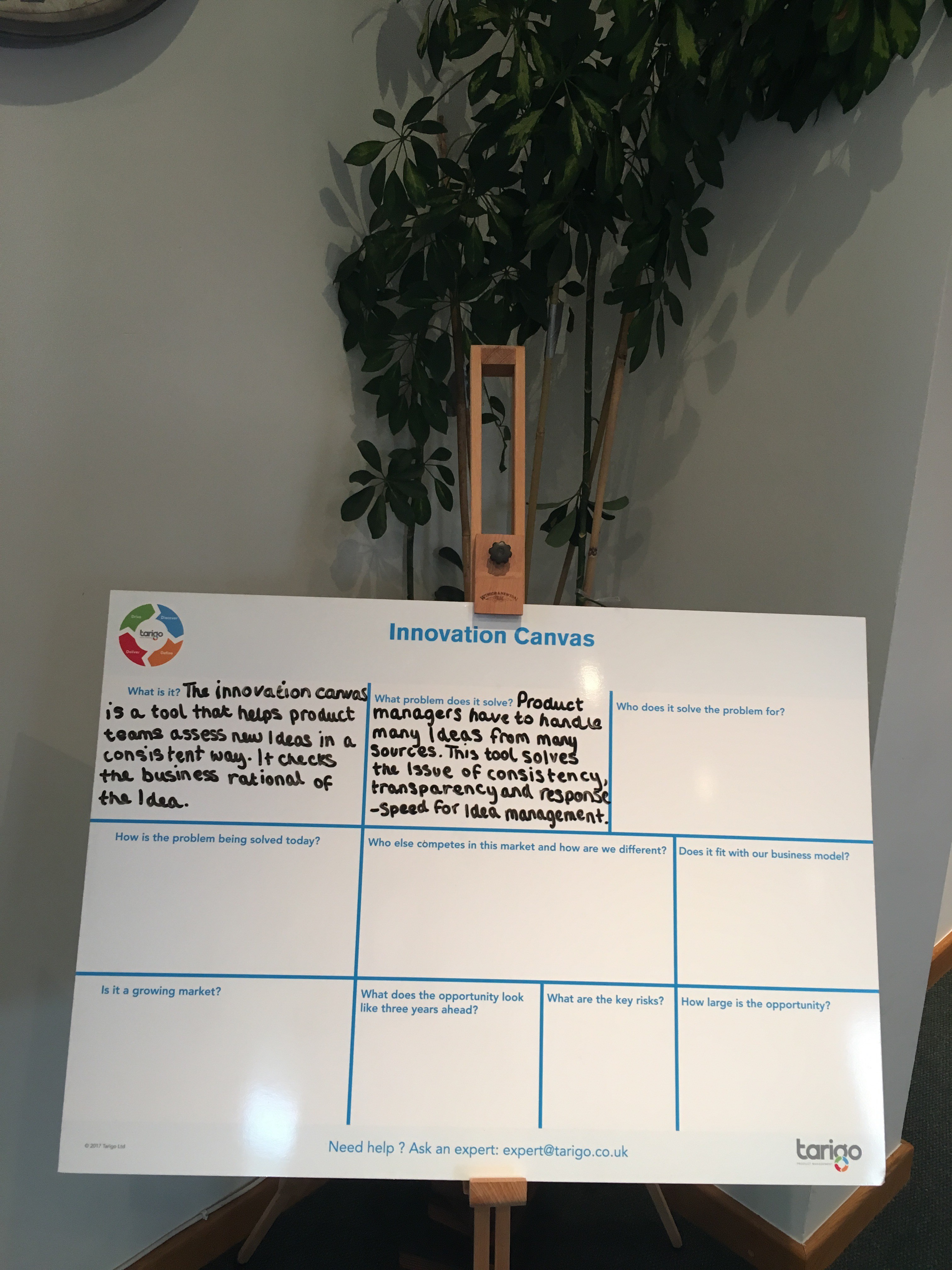
Step Two
Step two - what problem does it solve?
If it doesn’t solve a problem or open an opportunity then where is the value. Think of this from a customer perspective.
”product managers have to handle many ideas from many sources. This tool solves the issue of consistency, transparency, and response-speed for idea management”
read more
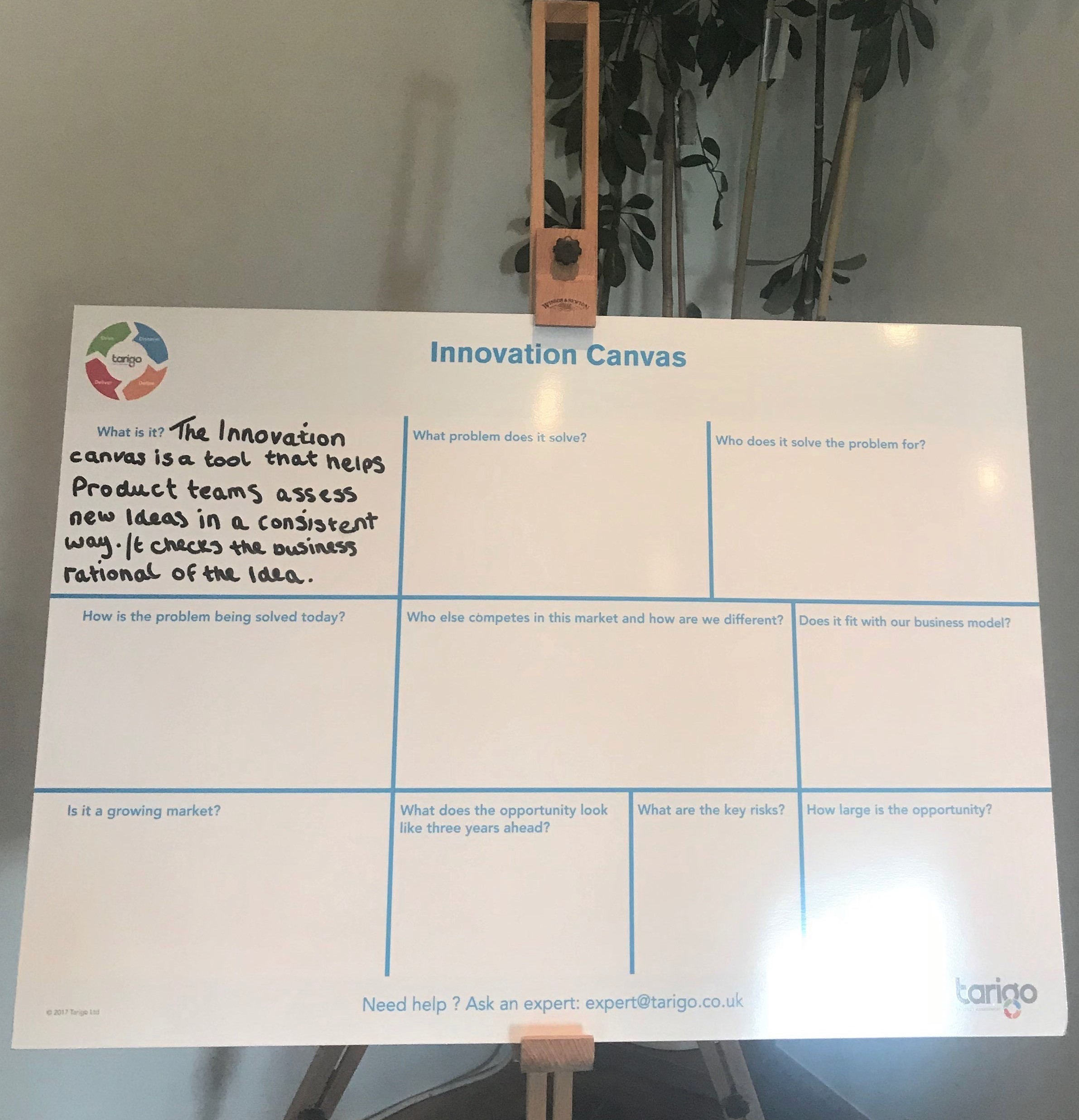
Step One
Over the next few days we’ll look at the innovation canvas - a tool to help product managers assess and qualify new ideas.
Step one - tell us about your new idea. Just a few words that explain it in the language of your target customer.
“ The innovation canvas is a tool that helps product teams assess new ideas in a consistent way. It checks the business rational of the idea”
read more
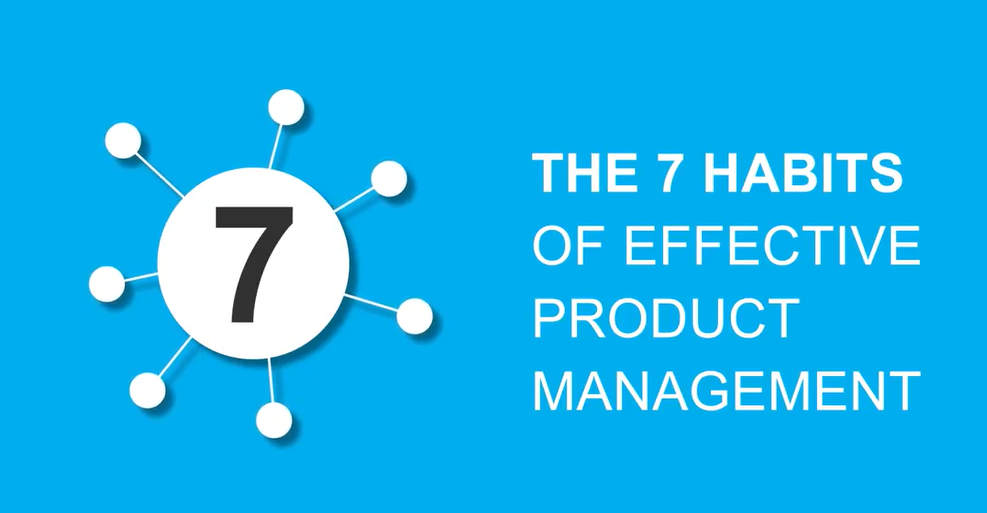
7 Habits
I hope you've enjoyed the posts about the 7 habits of being an effective product manager. If you want to learn more about this, please join us on one of our Complete Product Management training courses.
read more
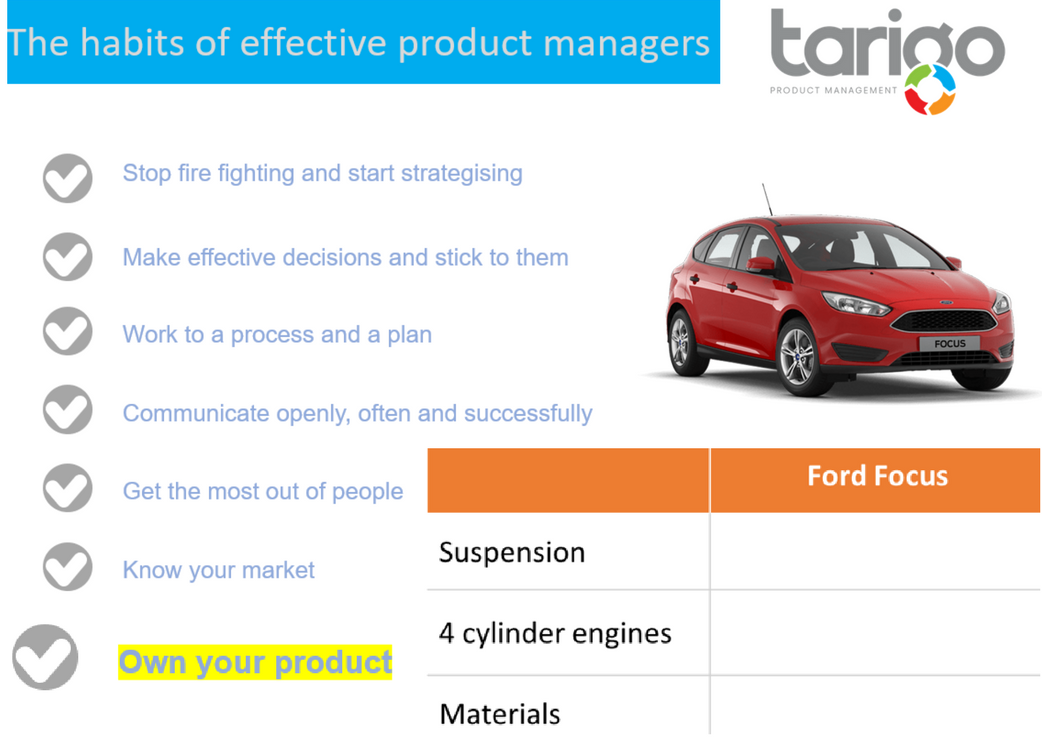
Habit 7
Own your product
Product Management is at its best when the product manager owns a go to market proposition, rather than a horizontal piece of technology.
Think of it like this. Being the UK Product Manager for the Ford Focus gives you a real product that you can successfully manage. Being the Product Manager of a global 4 cylinder engine removes that direct customer connection.
read more
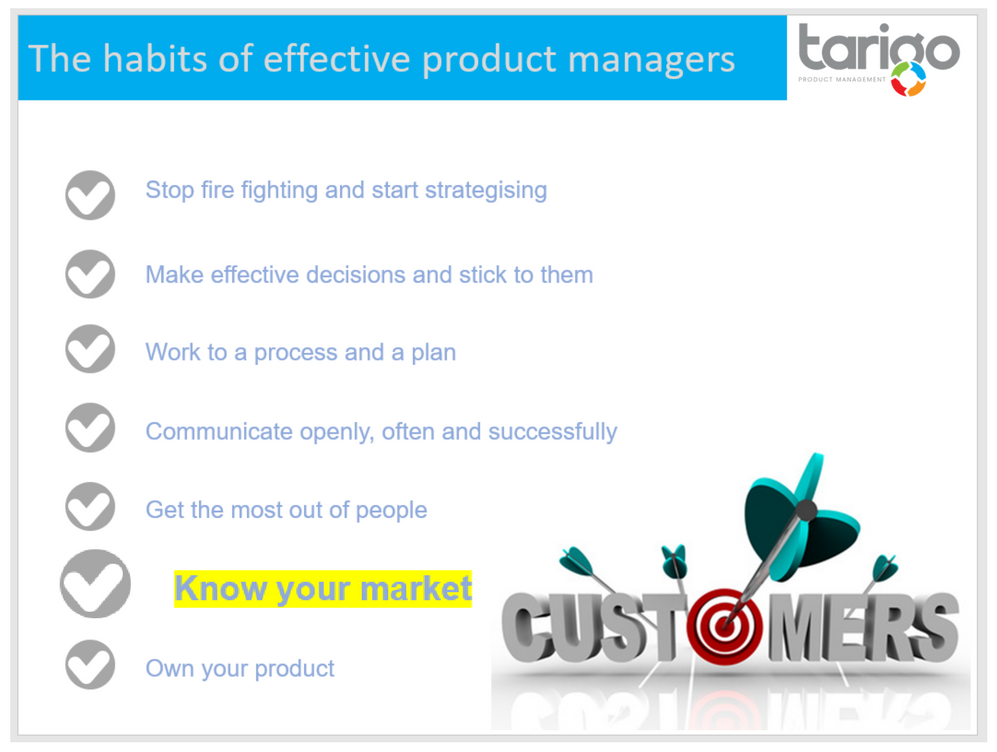
Habit 6
Know your market
Let’s not sugar coat this; A product managers opinion is irrelevant. The evidence that they gather from the market they serve is what drives good decision making.
There’s no short cut, product managers must step out of their office and into their customers world on a regular basis if they are to truly know their market and represent its needs.
read more
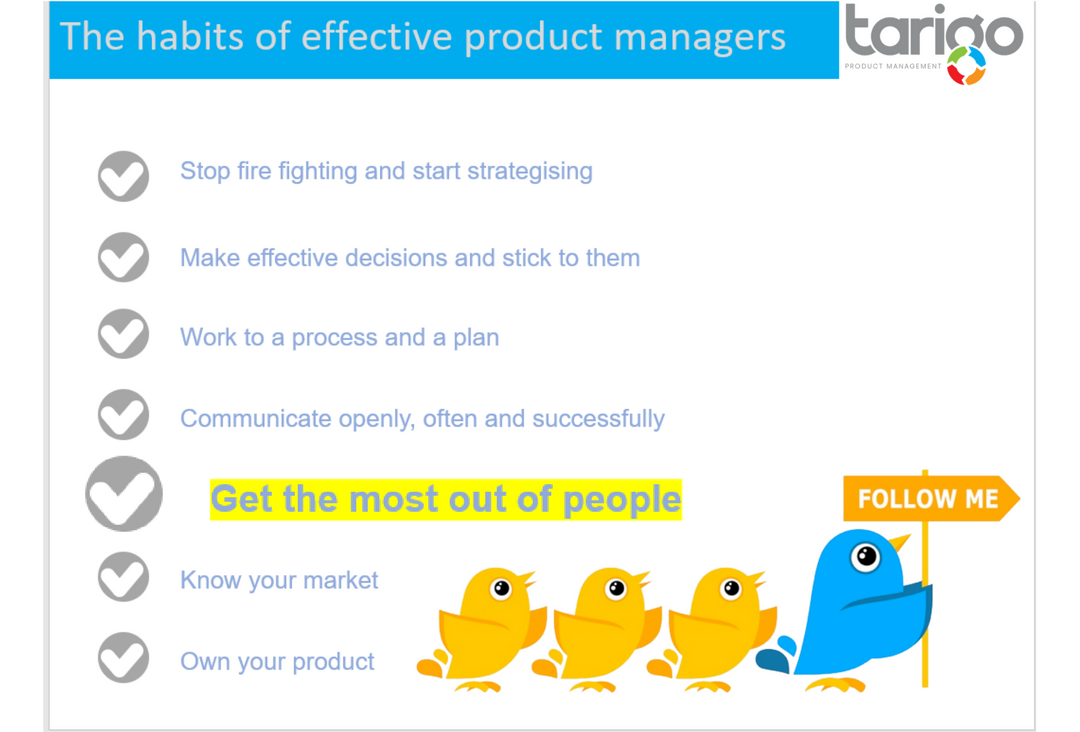
Habit 5
Get the most out of people
Product Managers have significant responsibility with very little direct authority – we might be measured on a huge revenue stream, but development, sales, marketing and any other team implicated in our product success do not report to us. What that means is that our role is one of influence rather than control. Influence comes from being credible, reliable, clear and consistent. Influential product managers represent the views of their market, and represent them with evidence clarity and consistency.
read more
Check out the Archive